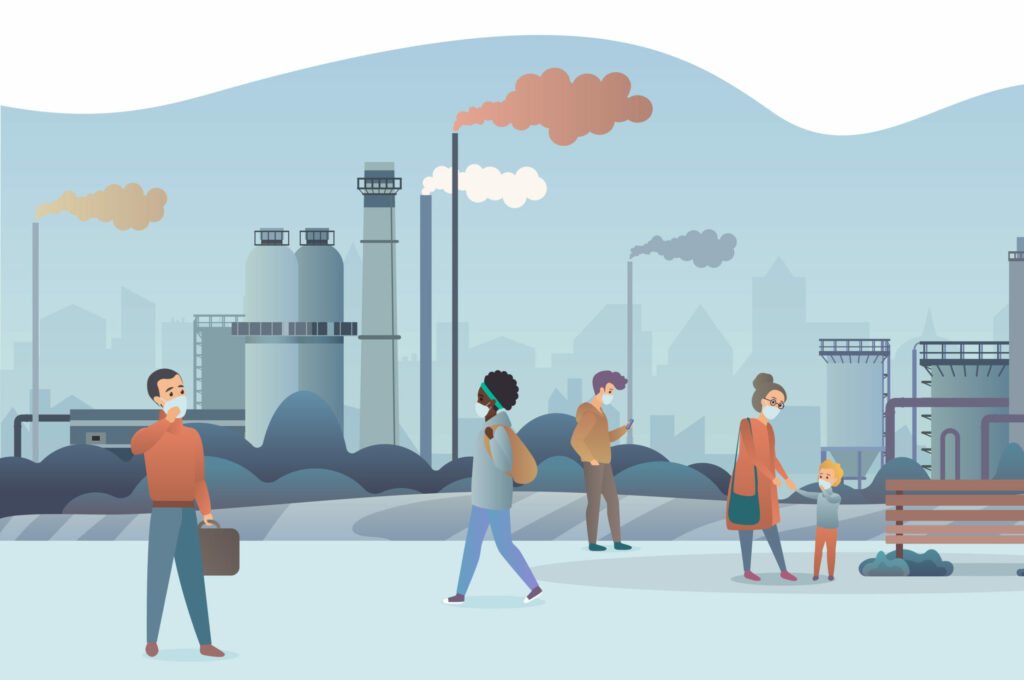
The safety of the air we breathe should be our greatest concern. Current statistics create a dire outlook. According to UNEP, air pollution is ‘the greatest environmental threat to public health globally.’ The organisation has reported that it is responsible for around seven million deaths per year. In the UK, 28 000 to 36 000 annual deaths are attributed to air pollutants.
Statistics like these demand urgent action. Around the world, it is estimated that nine in ten people are breathing air that exceeds the World Health Organisation’s recommended guidelines regarding pollutants.
Smart air monitoring solutions have the potential to address many of the issues associated with future planning and strategy around air pollution. From individual response to government policymaking, it is time to get smart about air quality. Smart solutions like those available from Smarter Technologies Group are creating transformative processes through IoT smart technologies.
THE EFFECTS OF AIR POLLUTION
The effects of air pollution on human health are well-documented – and evolving. Respiratory problems have long been linked to air pollution. In more recent times, studies have shown effects on heart health too.
Vulnerable communities often suffer the most from the effects of air pollution. Factors like periods of exposure, types of pollutants, and pre-existing health conditions all have a bearing on the health-related effects of air pollution. Effects can be short- and long-term – and even fatal.
Beyond human health, the environment is also put at risk by air pollution. It is something of a vicious circle. Energy use and production are the major man-made causes of air pollution. However, air pollution not only causes climate change; it accelerates it too.
The challenges of air pollution are evolving – and the environmental emergency, in turn, exacerbates public health worries. When air pollution particles return to the ground, they contaminate water sources and soil, affect plant (and crop) health, and impact entire ecosystems.
Additionally, there is an economic price to be paid for air pollution. The World Economic Forum has said that air pollution has a $2.9 trillion cost. Generally, these costs include health-related losses, the impact on productivity and infrastructure, reduced crop yields, and increased need for welfare.
BREATHING LIFE INTO AIR QUALITY TRANSFORMATION STRATEGIES
Smart Air Quality Monitoring: Understanding The Source of Pollution and Finding Solutions
Understanding is the cornerstone of meaningful change. Essentially, this is the power of smart technologies. By collecting data on internal and external air quality, citizens and authorities are empowered to plan and react according to real-time insights.
Smart technologies help to identify the source of pollutants and monitor this over time, which provides scope for positive changes. It also provides insights for authorities to deal with individual causes of pollutants more effectively both in the immediate and long term.
Smart buildings also have the ability to monitor energy consumption and emissions, with data providing tools for better control and adapted behaviours. At a granular level, this has the potential to address the causes of air pollution.
Smarter, Sustainable Cities For Cleaner Air
In the context of smart cities, these technologies will work towards providing more sustainable urban environments. Through a network of IoT sensors and gateways, authorities, industries, and individuals will have the information they need to understand the sources of air pollution, detect undesirable changes, and react to alerts in real time.
Within the broader smart city environment, smart air quality monitoring will be one component in an ecosystem of data sets being monitored for improved sustainability and green transformation.
Smart Strategies For More Effective Air Quality Management and Policy Making
Source detection creates potential for correction. It all starts with the identification of hotspots and high pollution zones. Immediate actionability and citizen response is the first step. This has the potential to make a tremendous difference to vulnerable members of our communities who are most at risk from air pollution.
In the long term, it creates opportunities for data-driven policy decision-making, data-based studies, and more impactful regulation. By collecting and analysing data over time, policymakers are best able to craft regulation according to actual conditions. They are also positioned to report on the effectiveness of regulation with detailed metrics. This has the potential to reduce the ‘trial and error’ approach.
Digital Solutions That Grow Alongside Our Cities
Our cities are exploding. According to the World Economic Forum, the world’s population grows by 83 million every year. This results in simultaneous urban population growth, with seven out of ten people living in cities by 2050. The systems devised to address air pollution today need to adapt to changes as they happen for continuity.
The data collected around air pollution can be used to guide expansion of cities, transport routes, and residential zoning. This has the potential to reduce exposure to pollutants and the negative health impacts over time.

Matthew Margetts is a Director at Smarter Technologies. His background includes working for blue-chip companies such as AppNexus, AOL/ Verizon, and Microsoft in the UK, Far East and Australia.


